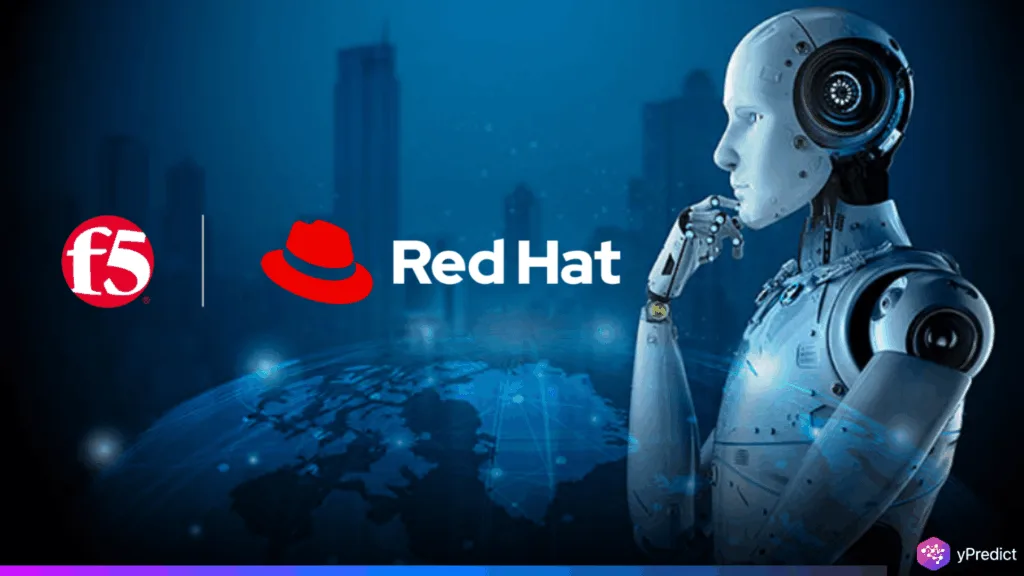
F5 has announced a major expansion of its partnership with Red Hat to enhance secure AI deployment. It will be accomplished through integrated solutions that improve observability, security, and scalability. During Red Hat Summit 2025, F5 also introduced BIG-IP Next CNF 2.0, a cloud-native solution designed for high-bandwidth and AI-intensive workloads.
Red Hat OpenShift AI is used in this strategic partnership to give businesses adaptable, scalable, and safe AI infrastructure. F5 Chief Innovation Officer Kunal Anand highlighted how the combined capabilities will make it easier for businesses facing mounting operational pressure to adopt AI.
How Can Enterprises Streamline Secure AI Deployment?
F5 and Red Hat are combining their strengths by integrating the F5 Application Delivery and Security Platform with Red Hat OpenShift AI. This integration addresses critical AI use cases such as retrieval-augmented generation (RAG), secure model serving, and efficient data ingestion. Additionally, as businesses rapidly embrace AI, the partnership ensures observability, security, and performance at scale.
A recent F5 survey from its 2025 State of Application Strategy Report indicates that 96% of businesses have already begun using AI models. The majority are concentrated on increasing security, cutting expenses, and improving performance. As cloud-native solutions become more popular, the collaboration aims to meet these demands by providing reliable, modular deployment models.
What Makes CNF 2.0 Ideal for Cloud-Native AI
Cloud-native network services designed for AI-driven environments have advanced significantly with F5’s launch of BIG-IP Next CNF 2.0. CNF 2.0 is aimed at service providers, ISPs, and big businesses and offers low-latency performance and horizontal scalability. Additionally, it provides security management, which is essential for the high-bandwidth networks of today.
The platform provides data plane and control plane separation in addition to standard network protection. As a result, CPU usage is reduced by 33%, and infrastructure expenses are reduced by 60%. This flexibility enables organizations to more effectively manage AI applications across data centers and multicloud configurations.
The partnership prioritizes API-first security to facilitate secure model pipelines and prevent risks such as data leaks. The BIG-IP and WAAP distributed cloud solutions from F5 are seamlessly integrated with Red Hat OpenShift AI. Additionally, it ensures consistent enforcement of AI infrastructure across cloud environments.
Is Open Innovation the Future of AI Infrastructure?
Both companies reaffirm their commitment to open-source collaboration. They are claiming that open, interoperable platforms are the best way to advance AI’s future. Red Hat OpenShift AI allows businesses to create AI capabilities without being constrained by strict vendor ecosystems.
F5 and Red Hat are aligning their roadmaps to meet new demands in AI infrastructure as the adoption of AI picks up speed. Additionally, the collaboration establishes the foundation for sustained innovation. It may range from modular orchestration to automated inference performance optimization.
Together, they will showcase use cases and real-world customer success stories from different industries at Red Hat Summit 2025. Through technology integration and strategic alignment, the expanded partnership enables scalable, adaptable, and future-proof AI operations across industries.
Can You Scale Secure AI Deployment Efficiently?
The collaboration between F5 and Red Hat provides enterprises with a unified approach to secure AI deployment. Both flexible AI infrastructure and cutting-edge cloud-native technologies support this. As the demands on modern applications rise, the partnership offers the assurance, speed, and security needed. Additionally, innovation helps businesses scale AI responsibly and effectively wherever it leads.






